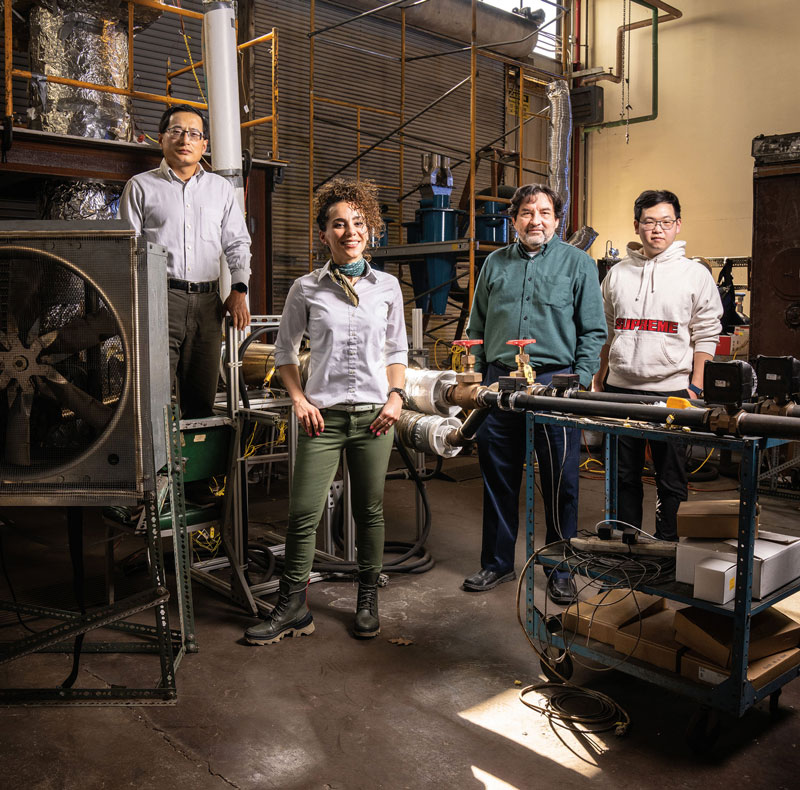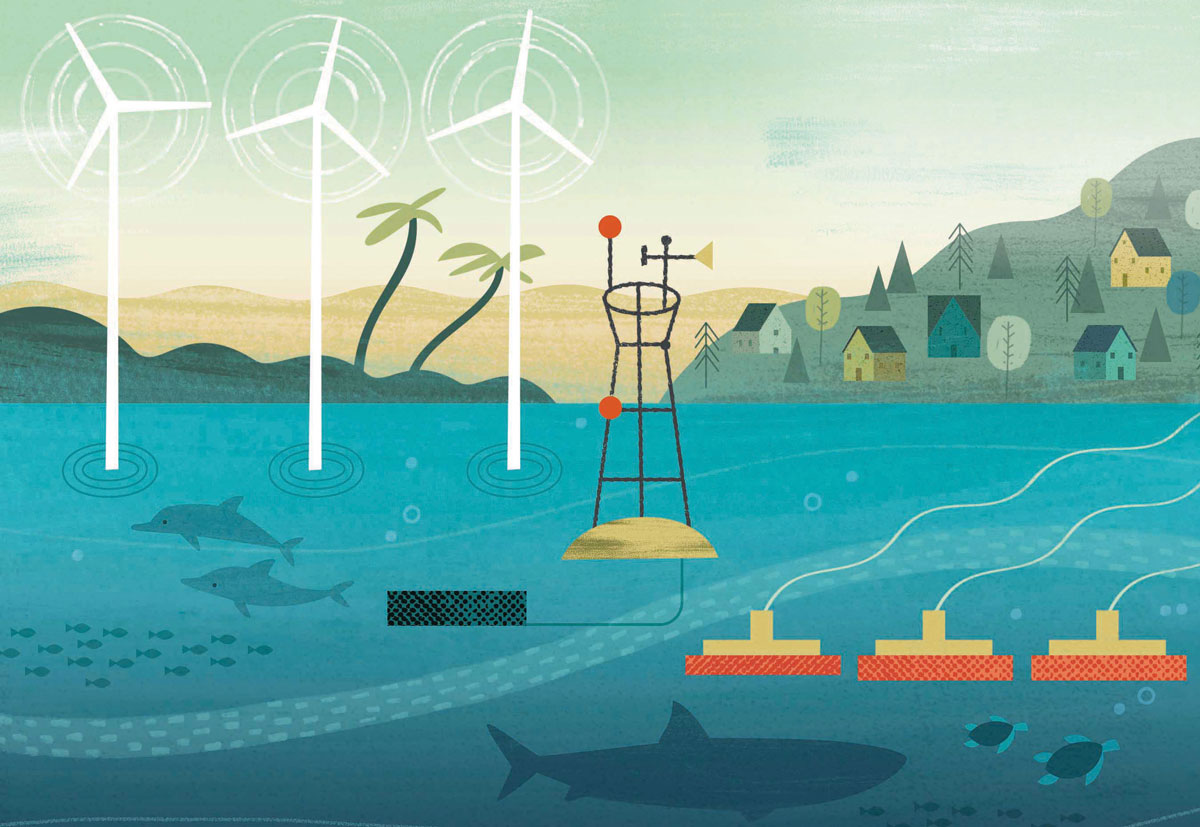 According to the Environmental Protection Agency, in 2018, Americans generated 292 million tons of trash, aka municipal solid waste (MSW). That’s triple the amount generated just 60 years ago.
According to the Environmental Protection Agency, in 2018, Americans generated 292 million tons of trash, aka municipal solid waste (MSW). That’s triple the amount generated just 60 years ago.
While recycling and composting have increased, the majority of the waste produced goes into landfills, the most inexpensive option. About 12 percent of MSW was converted into energy by waste-to-energy plants in 2018, according to the Energy Information Administration.
“There are different ways to process trash,” says Carlos E. Romero (pictured, center right), principal research scientist and director of Lehigh’s Energy Research Center (ERC). “One is to take it to a landfill, another is burning it to produce electricity, and another is utilizing it as a feedstock for producing biofuels and bioproducts. However, the nature of MSW, a very heterogeneous material, with large variability in its physical, chemical, and biological characteristics, poses significant challenges in optimizing MSW conversion processes.”
The ERC has been awarded a new $3.5 million project by the Department of Energy for the development of advanced technology for rapid detection and analysis of MSW streams. This project is part of a $34 million effort to support high-impact research and development to improve and produce biofuels, biopower, and bioproducts.
Lehigh will lead a team that includes the Energy Research Company (ERCo), the DOE’s National Energy Technology Laboratory, ThermoChem Recovery International, Covanta Energy, the University of Toledo, and SpG Consulting. Lehigh participants include ERC principal research scientist Zheng Yao (left), civil and environmental engineering assistant professor Farrah Moazeni (center left), Romero, and graduate student Jincheng Liu (right).
The team will work on streamlining one of the most complex aspects of the waste-to-bioenergy process: analysis of the material. The project will bring together two types of leading-edge spectroscopy, laser-induced breakdown spectroscopy (LIBS) and Raman spectroscopy, in combination with artificial intelligence (AI).
The technology will be designed to provide rapid, in situ characterization of MSW feedstock, providing critical characterization and chemical analysis data for feed-forward process control of downstream biofuel production processes. Together, the hardware and software elements will be capable of improving MSW characterization throughput over baseline methods by at least 25 percent. The approach could make it possible to process waste material in minutes instead of hours.
—Photo by Ryan Hulvat/Meris
The ERC and ERCo have previously worked on a method of using LIBS and AI to better analyze coal for power generation. “With LIBS alone,” says Yao, “we were only able to measure the elemental composition of the fuel. But, by using AI neural networks, we were able to improve measurement accuracy and correlate elemental composition to other high-order parameters such as calorific value and ash fusion temperature, for example.”
Romero explains that waste-to-energy producers need an accurate analysis of the waste material in any given lot. “There are standardized procedures for how a representative sample is arrived at and analyzed,” he says. “The team’s innovative LIBS-Raman spectroscopy, combined with AI, has the potential to significantly improve the accuracy of the analysis as well as the speed at which it occurs, while facilitating the incorporation of this information into the bioenergy reactor process control.”
The project could lead to a process that is both easier and less costly, making waste-to-energy a more attractive alternative to the landfill, and moving the U.S. closer to a waste-processing approach that is sustainable.
“Reducing the load on landfills will be one important impact of this project,” says Moazeni, who is leading the machine learning development and training of the AI algorithms. “There are so many factors that must be considered when a landfill is created. How close is it to the nearest town? What is the wind flow? The soil conditions? Will there be leachate? This method can have a huge impact on the amount of waste we’re sending to our landfills. And because we’re recycling material, we’re helping to close the loop, which takes us one step closer to sustainability.”

